Buying the Bike
The lady who sold me this bike seemed quite reluctant to part with it. She had advertised it for a fair price, in view of it’s condition and the amount of work that would be required to restore it. Yet, at the point of sale, on a rainy Thursday lunchtime in a small country village, she hesitated when it came to handing it over. This old bike had been a special part of her youth, and it had been given to her as a birthday present when she turned 16.
Letting go
Perhaps if I’d told her that I going to rebuild it as a fixie, or that my intention was to modernise it with new components, she would have wheeled it straight back in her house. A deal was made: in fact, more than a deal; she actually made me promise to restore it, to take care of it, as the bike meant that much to her. I don’t think I’d ever met someone so attached to a bike they were selling. So I promised her I’d take a photo of the bike when it was restored.
The Bike
So what is it? Well, her attachment to this bike was certainly not based on its material value. This is a Claud Butler Electron, a 5 speed racing bike from 1976, dated by the stamped Atom pedals, with a simple one ring crankset and 27¼ inch wheels, Weinmann centrepull brakes and “suicide” levers, and a Japanese crank. Yet, it washy no means a high end road bike, though strangely it has a Reynolds 531 fork while the rest of the the tubes are straight gauge steel. Surprisingly, the single gear shifter is Campagnolo Valentino, so one gets the impression that the Electron was an affordable but well built bike for simply getting around on.
Potential
A lot of work. That was my first impression, but I also really liked the lilac colour, feminine or not it may be. I could see the potential in bringing this bike back to its once former beauty, there wasn’t any bad damage to the frame and most of the components seemed to have survived. In fact, I asked the lady if she’d ever left the bike outside, exposed to the elements. She replied that she hadn’t, and I believed her. It’s just amazing how rusty and beaten a bike can get even when stored under cover after many years.
A Bike for the People
This bike was built in London in 1976, as proudly stated on its headbadge, by the Claud Butler workshop. There’s a thorough and informative website dedicated to Claud Butler bikes here, it’s well worth visiting if you are looking to find some information on an old model. The Electron was one that was introduced in the late 1960’s and was sold for £31.10, which is about £215 in today’s money. You were given the option to just buy the frame and build it yourself for £9, or you could ( which I imagine most took ) buy a complete bike and wheel it out of the shop. What’s also interesting is some of the Electron’s original parts are Japanese, a sign of how even in 1976 the Japanese bike industry was making inroads into the traditional European market.
The Worst Parts
Wheels always suffer badly on old bikes that have been stored for years like this one. Rims seem to attract the worst of the oxidation, and tyres are normally eaten away by the savages of time. Most of all, spokes become rotten and ruin the look of the whole bike. Looking at this bike, I can see that the most time consuming job will be restoring these sorry-looking wheels to complement the attractive paintwork of the frame. The brake calipers are heavily soiled and are groaning on the rims, and the headset feels as rough as an old sailor’s boots.
It’s a Bit Quirky
It reminds me a little of the Raleigh Super Tourer, a similar five speed which was a bit left-field amongst the Raleigh exports back in the 1970’s. Yes, the Super Tourer had better components and a full Reynolds 531 frame, but there’s something a bit quirky about both these old models. Tellingly, both the Super Tourer and this bike were owned by women who were dearly attached to them. Indeed, it feels like this Electron had aspirations to be a quality road bike but its creator just never wanted to go that far with it. Would it leave you feeling a little bit cheated? That you owned a bike that’s teasingly close to a decent club machine, but yet it’s not quite there. Not only does it brandish its Reynolds sticker on the forks, but this bike even has a “Prugnat” lugs sticker on the seat tube. I’m not sure this bike ever knew what it was, or what it actually wanted to be. But one things for sure: it needs a damn good clean.


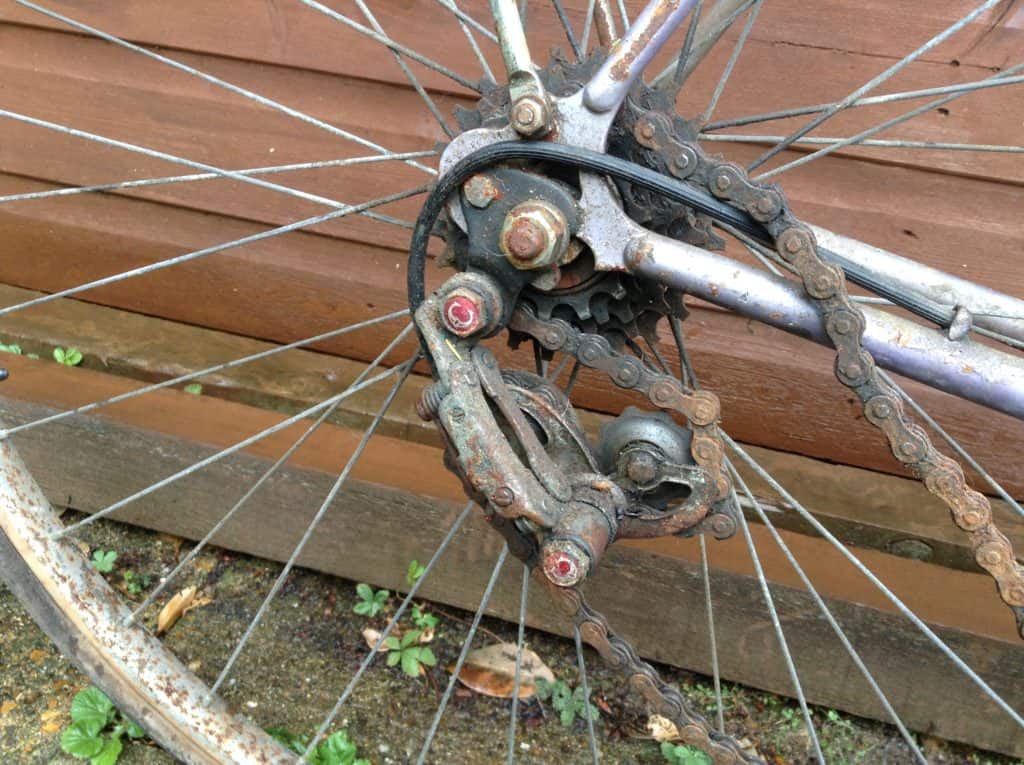
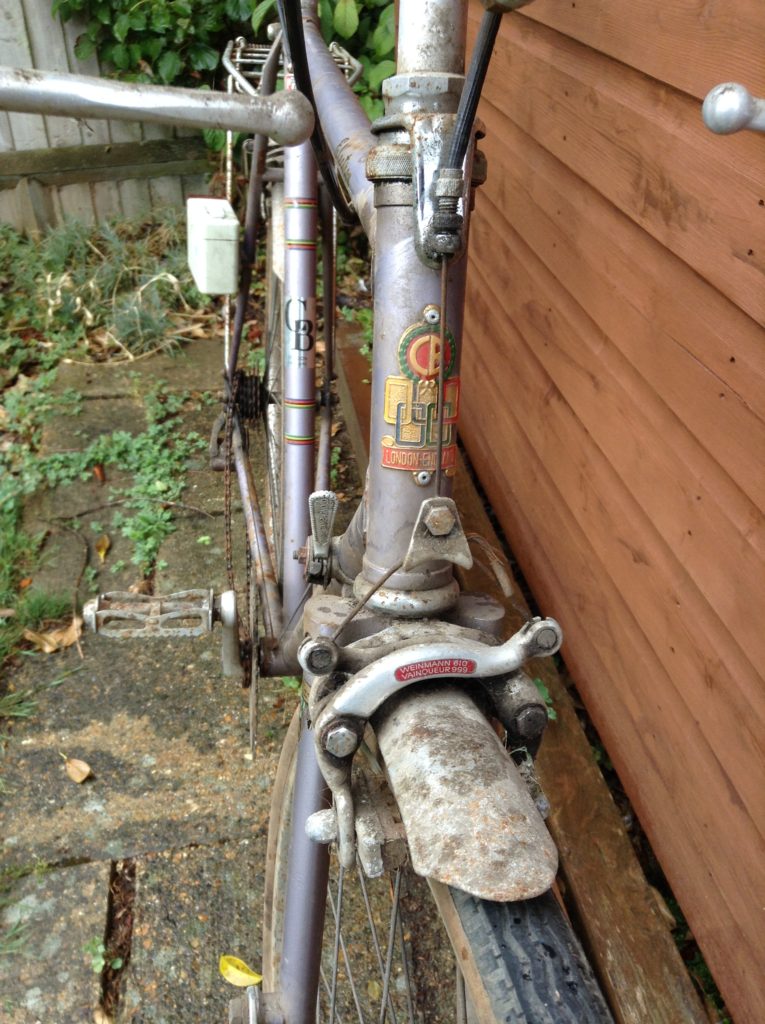
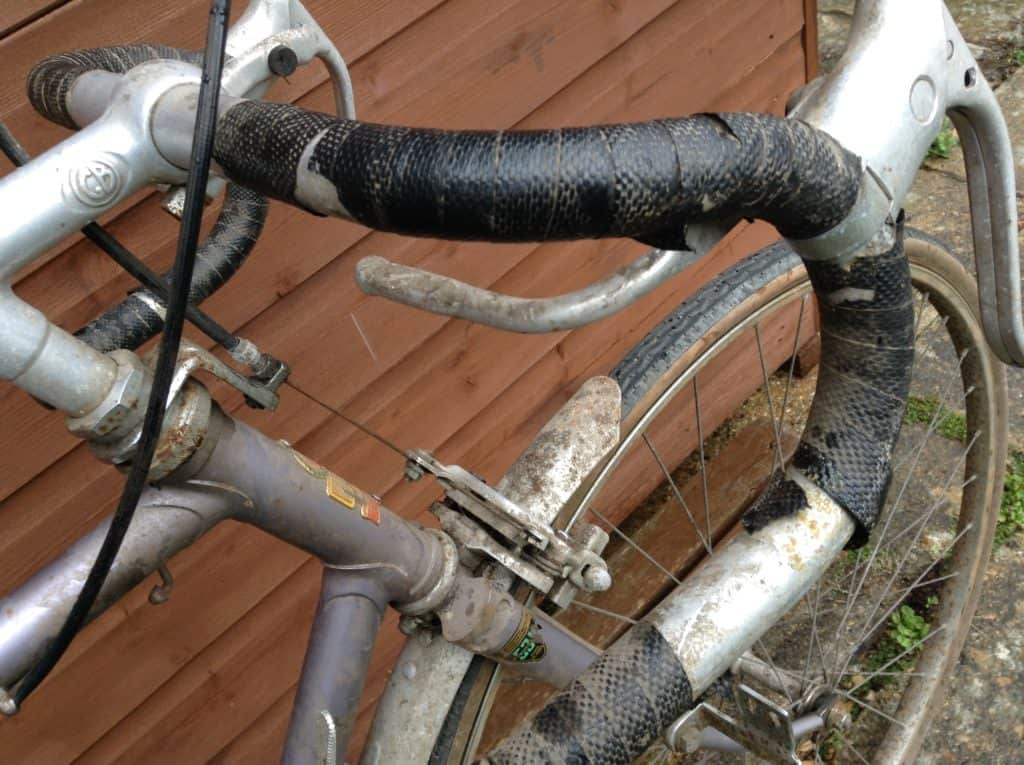

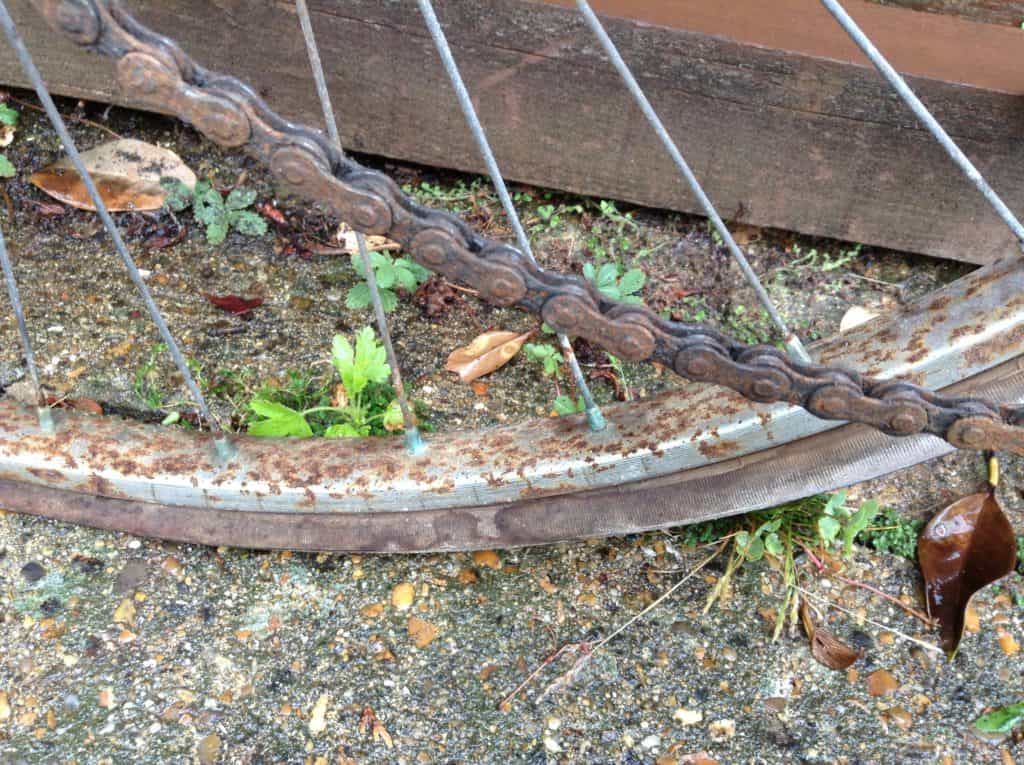

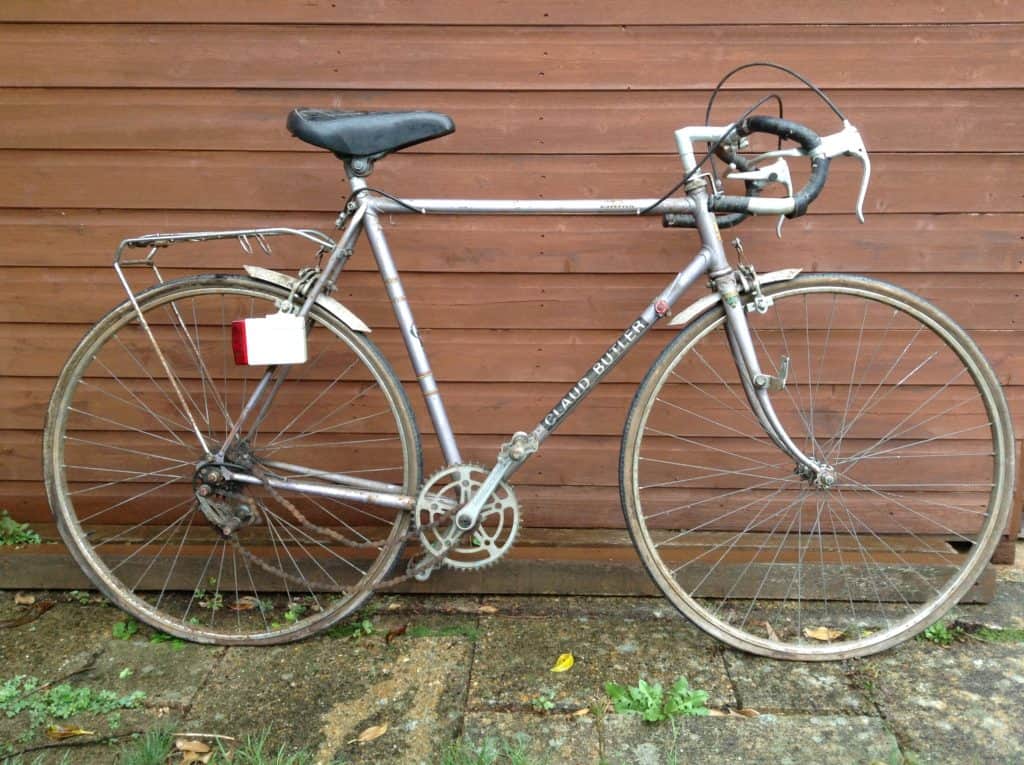
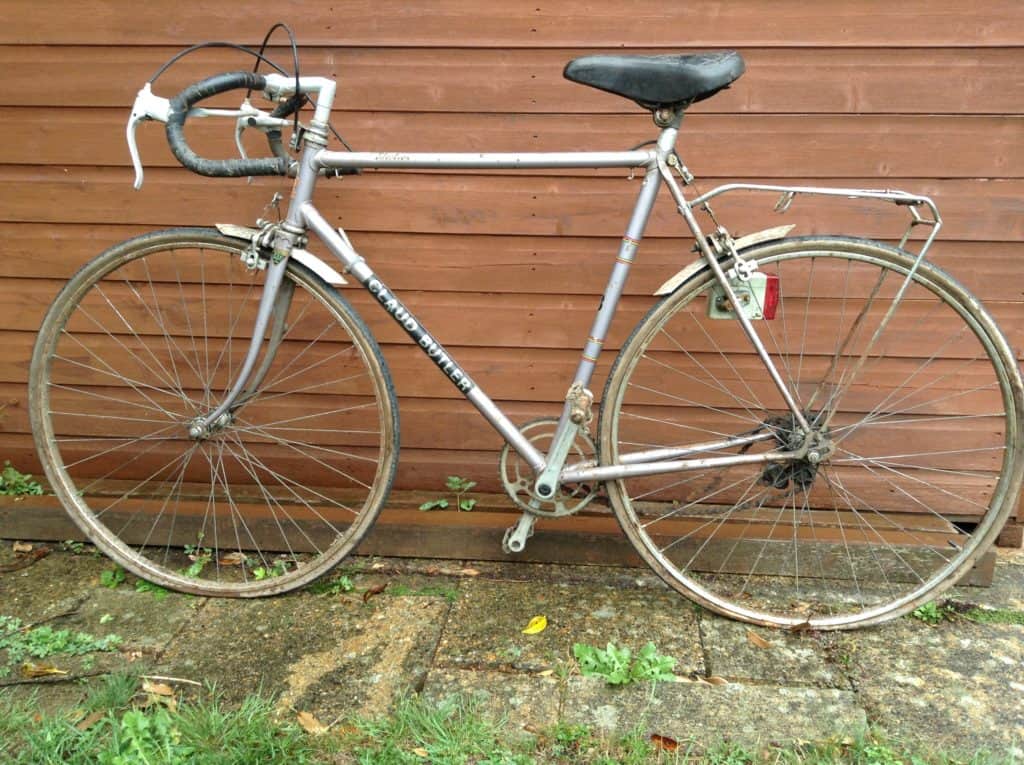
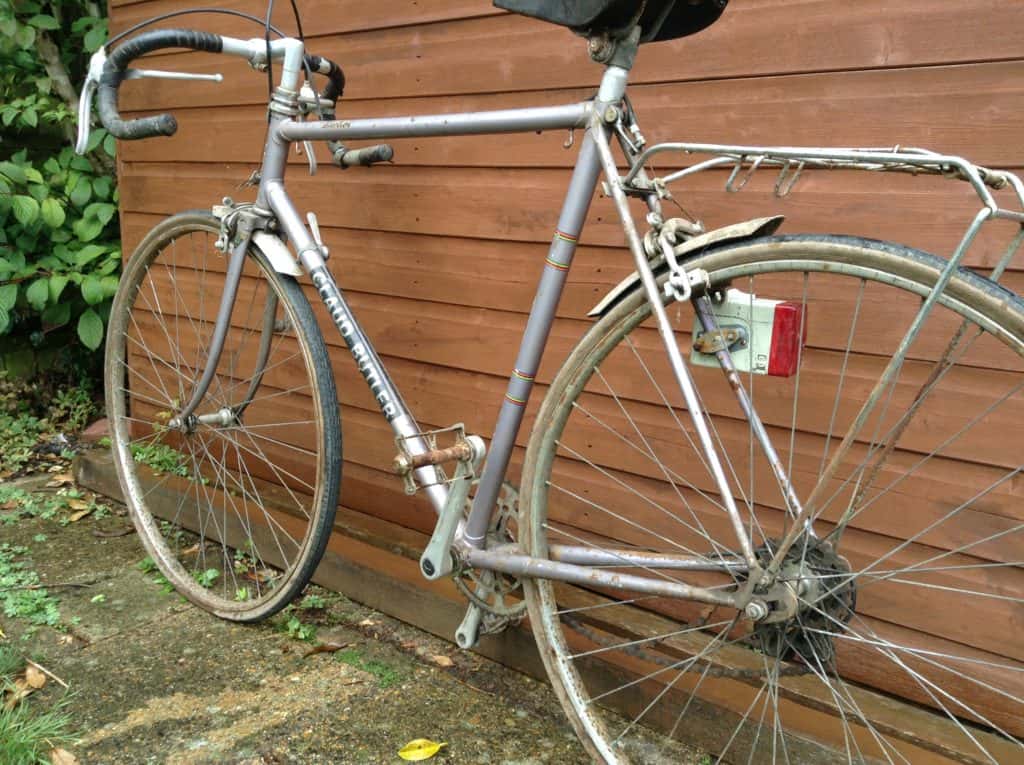
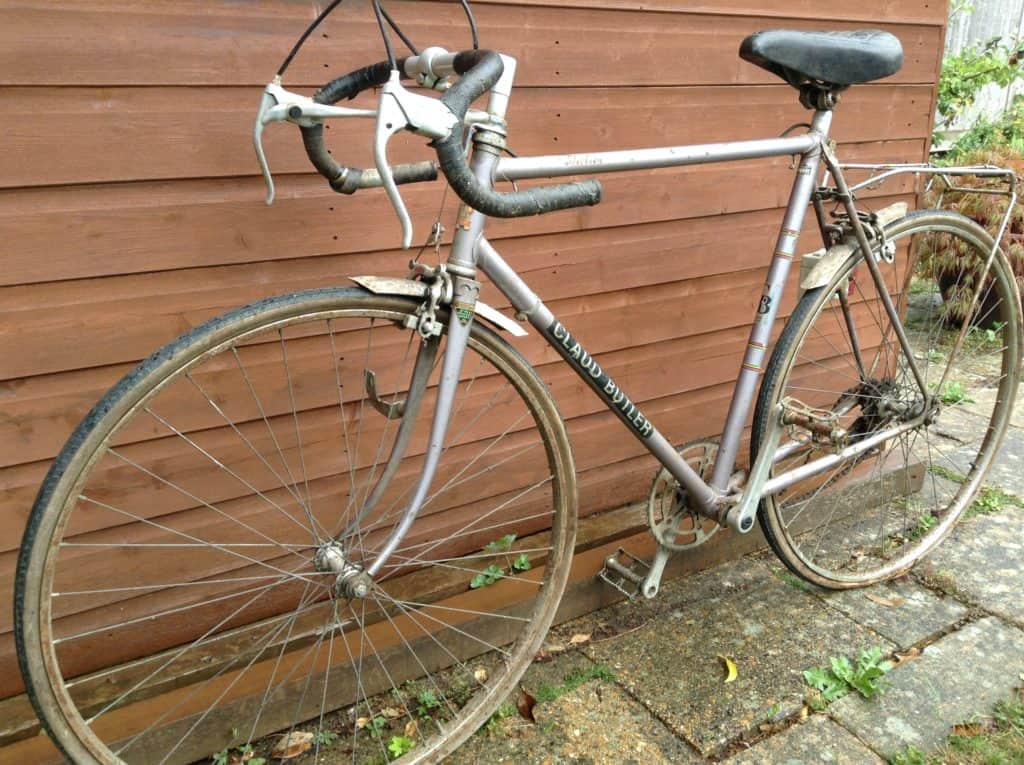
What about removing the rust off the frame, preserving the paintwork and decals?